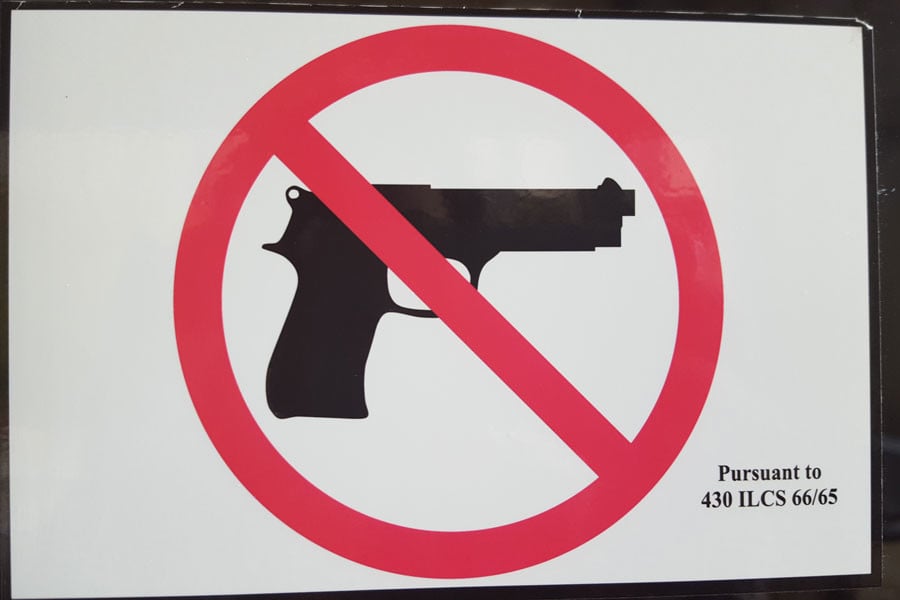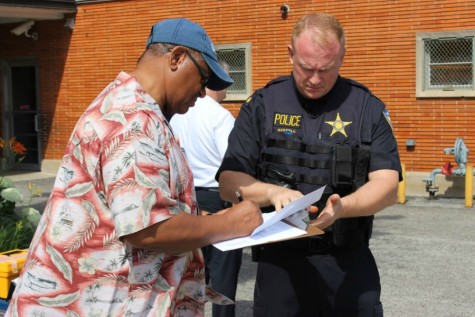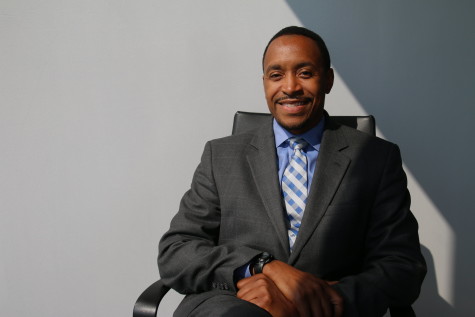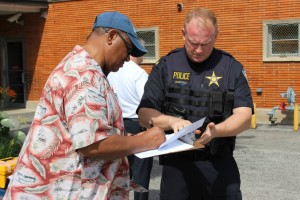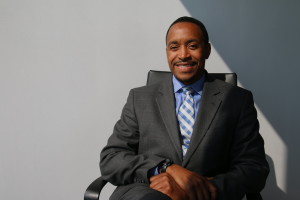Northwestern active shooter protocols reflect industry standards, police say
Sophie Mann/Daily Senior Staffer
Guns-prohibited stickers were required to be placed on all public buildings in Illinois following concealed carry laws in 2013. Northwestern continues today to also train students in responding to active shooter situations.
November 10, 2015
After several recent shootings on school campuses nationwide, Northwestern continues to train students and faculty in how to respond in the event of an active shooter on campus.
There have been 156 school shootings since the Sandy Hook Elementary School shooting in 2012, though this number also includes non-targeted incidences like suicides and misfires, according to gun safety advocacy group Everytown for Gun Safety. Last month, 10 died during a shooting at Umpqua College in Oregon, and one died and two were wounded after a shooter opened fire at Tennessee State University.
NU runs an active shooter training program, featuring a video and a Q&A session to instruct the community on the police and individual response to an active shooter on campus, University Police Deputy Chief Daniel McAleer said.
Although no new protocols have been implemented in light of recent shootings on other campuses, McAleer said UP is being asked by more departments and schools across NU to do its active shooter training. He said he could not release information pertaining to which groups are requesting these trainings.
McAleer said the training outlines three steps for an individual faced with an active shooter.
“First, get out. If you have the option to leave the building where the subject is firing gunshots, leave that building immediately and seek shelter elsewhere,” he said. “Call 911.”
If you are unable to leave the building, then the second step would be to hide and barricade yourself in a room to prevent the shooter from entering, McAleer said. However, failing this, you may be forced to confront the shooter, he said.
“The last one is the hard one, it’s called takeout,” McAleer said. “That means you’re in a position where the gunman is already inside the classroom you are in and whether or not you have the fortitude and the ability to take that gunman out — how do you do that?”
The protocols in place at NU are mostly standard across the country, McAleer said, including those for police response. UP responds and engages with the shooter as soon as at least two policemen arrive on the scene, a policy put into place following the Columbine High School massacre in Colorado in 1999. After the shootings at Columbine and at Virginia Tech in 2007, it became clear police need to respond immediately to emergencies even if it means only sending in a couple officers, McAleer said.
Armed with ballistic shields and rifles as well as equipment to break down barricades created by the shooter, UP’s main priority is to stop the shooter, McAleer said. Nearby, Loyola University Chicago has a contingent of armed police officers, while DePaul University does not have armed public safety officers.
“The officers are trained, as tough as it is, to keep walking whether they’re dealing with panicked students or they’re dealing with wounded,” McAleer said. “Their job, once they’re in the building, is to go after the shooter.”
UP trains in rapid deployment alongside the Evanston Police Department, which acts in a supportive role, now-Deputy Chief of EPD Jay Parrott told The Daily in 2014. In the case of a death resulting from an active shooter, EPD acts as the primary investigator, he said.
Gun violence has plagued the city, with between one and three homicides a year on average — often related to gang violence. Evanston police have responded to the trend of gun-related crimes in the city through gun violence discussions in the community, as well as the city’s gun buyback program established in 2012. The city has also been collaborating with NU to study and address gang violence.
UP similarly trains with the Chicago Police Department for NU’s Chicago Campus, McAleer said.
The Center for Personal Protection and Safety, which created the training video used by UP in 2007, tried to provide the most important information related to an individual’s options when responding to an active shooter, Steve Warren, a senior account executive with the center, said in an email statement to The Daily. He said the center’s training, which was listed as a reference in the Department of Homeland Security’s 2008 active shooter response booklet, is used by thousands of organizations.
In 2014, the center’s training was included in a study alongside DHS training to study the effects of active shooter training programs on student resilience, fear and perceptions of safety. The study, conducted by George Snyder for his doctoral dissertation, found the center’s program appeared to significantly influence student resilience and perceptions of safety but not student fear.
“Validation from DHS is worthy of saying that the concepts contained within our program are best practices,” Warren said.
McAleer said the training video is available online to anyone in the NU community with a Net ID.
Email: [email protected]
Twitter: @dagerber
